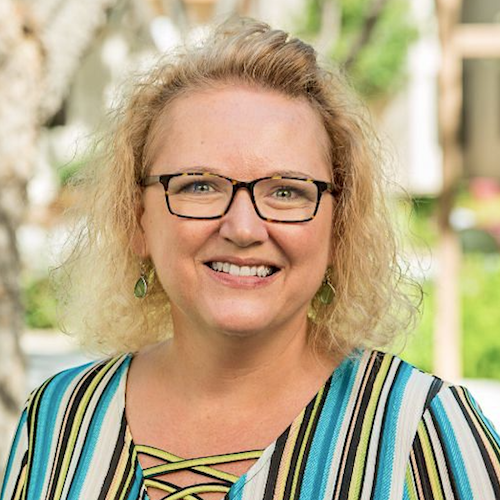
Dina Capek, health services director at Royal Oaks, a Sun City, AZ, retirement community with independent living, assisted living and memory care, recently spoke with McKnight’s Senior Living about how COVID-19 has resulted in changes in the use of technology in senior living.
Q: Before COVID-19, how was Royal Oaks using technology?
A: We use a lot of different technology in our community, and we have for a long time. We have had an electronic medical record since 1999. We were the first long-term care community in Arizona to convert to an all-electronic medical record. And we use a whole host of technology, from our in-house TV to technology for human resources processes to logging in visitors and guests.
Q: How did the pandemic change the community’s use of technology?
A: We started using the secure messaging part of our family engagement platform (Royal Oaks is a Caremerge client). I asked our families early on, “Do you know of anybody who’d like to make face masks for our staff and our community?” We’ve had face masks mailed to us from so many places. But we also let them know what we’re doing and how we’re doing. That’s been something that’s been very well-received by our family members.
We also have a great resident portal, so we were able to add some services to our community. Primarily for independent living residents, but also for assisted living residents who want to use it, we set up an go onto our portal, where we have a list, and they can check off what they want and how many and then submit that list. We have personal shoppers here who can bag those items and deliver them to their door.
We also have Gourmet to You, meals to everyone’s rooms. Residents can go onto the portal and select what items they want to order for each of their meals. Our staff takes those orders and makes sure we deliver what they ordered.
When COVID happened, we had to close our 12,000-square-foot fitness center, which was logging 3,500 to 4,000 visits each month. That was devastating to so many residents. We have a very active population. So we immediately began using our in-house TV to do live broadcasts every day. In fact, almost all day long, we’re offering something on our TV — fitness, spiritual and devotions and meditation, trivia games, lectures, storytelling and educational programming. A lot of these programs are done by our volunteer independent living residents.
An event coordinator formerly was planning live events for people in independent living, so she has converted to providing a variety of options through the in-house TV.
Our life enrichment staff members also have time slots each day to provide activities for our residents in assisted living and are setting up video chats for assisted living residents and family members. Some assisted living residents have their own devices and go onto the portal themselves, and others use a community computer.
Many of our memory care residents are able to use a community computer to check email with some assistance from our life enrichment staff. We want to be sure they still can keep what skills they’ve had or what routines they’ve had for as long as they can in those settings as well.
Q: Do you think that some of these things will continue after the virus no longer is a threat?
A: I absolutely do. Our management team has talked a lot about that. Obviously, we want to get to the point where we can responsibly open all of our dining venues, but that will look a little different. We recognize that, and we’ve received a lot of positive feedback from our residents, who say, “This is so convenient” and “Could we continue to order in if we don’t want to come down to one of the dining venues?” We’re looking at a number of things that may stay in place after things restabilize.
Q: What other lessons have you learned from this experience?
A: From a technology standpoint, we are able to put our interdisciplinary team into the family chat, so it’s a collaborative approach to information that keeps everybody informed of what the families are interested in but also what we’re sharing with the families.
COVID itself has really broken down silos for us. Not that we were such a siloed community, but it’s just the nature of the beast. Food service, environmental services, security, maintenance, healthcare workers — by nature, people are doing very precise and different types of jobs.
What we’ve seen is a partnership with all of our staff. We had to look at how we were working. Our marketing team members have all become personal shoppers and are helping our food service staff take orders. Our resident service coordinators, because they have fewer appointments and less paperwork to process and things to coordinate for residents, are helping food service confirm food or grocery orders, and they’re helping to bag and deliver. Some people from environmental services and transportation are helping to manage our gatehouse or helping to screen our residents and visitors coming on the property.
We’ve seen such camaraderie with our staff saying, “Yes, I can help.” That’s just been beautiful. So even in the worst of times, we’ve seen the best of each other.



